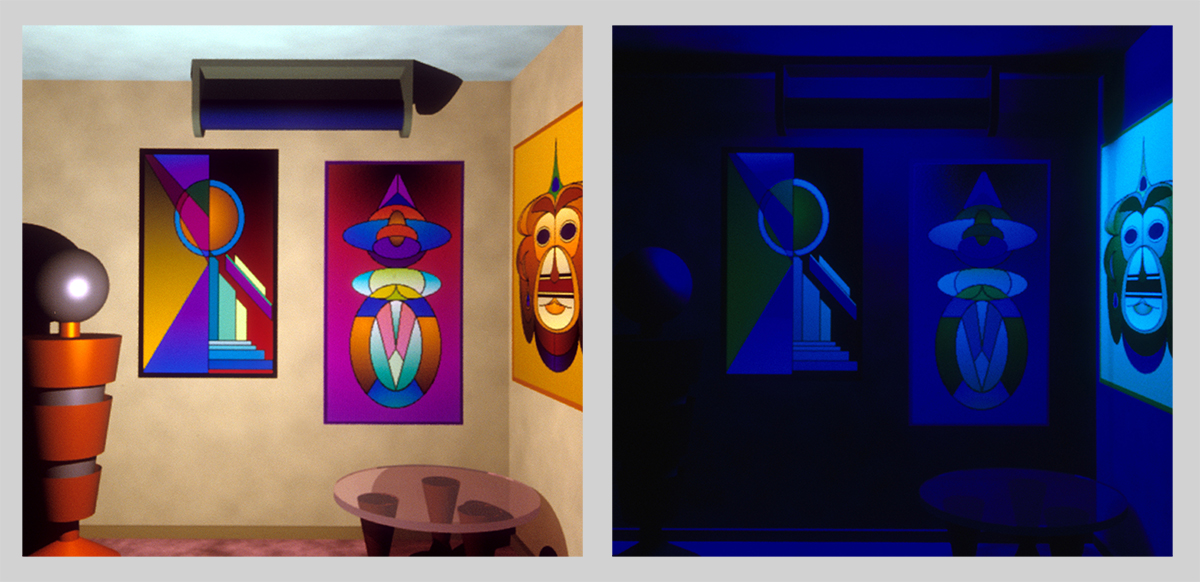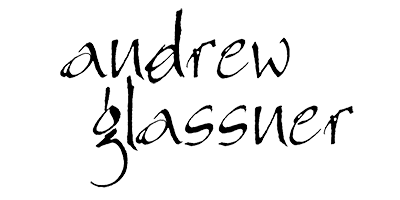The Main Idea
If you’re wearing an old-fashioned analog watch, it probably has hands that glow in the dark. They do this because the watch hands are coated with a material that is phosphorescent. This means that the material absorbs photons of light when they strike it, and then the material retains that energy for a while. Then over time it slowly releases that energy as new photons. This radiated light may be of a different color than the light that struck the material. Many glow-in-the-dark objects appear green at night, because green phosphors are widely available.
A related physical property is exploited by fluorescent lights. These are glass bulbs filled with gas (frequently it’s mercury vapor). When we apply electricity to the bulb, the gas absorbs the electrons and then re-radiates their energy as photons. These photons are in the ultraviolet range, which our eyes can’t pick up. So the tubes are coated on the inside with phosphors that absorb the UV light and then re-radiate it in the visible range.
So phosphorescence and fluorescence are closely related. They both absorb light at certain frequencies, and then radiate it back out at other frequencies. The difference is that phosphorescent materials take their time about it and release their light slowly, while fluorescent materials send their light back out right away.
These two phenomena are very cool, and an important part of our environment. I’ve developed a pair of mathematical models that model these effects. The model works nicely with any rendering algorithm, but it works best with renderers that model light as a densely-sampled spectrum, rather than the more common simple 3-sample RGB model.
Phosphorescence
Let’s look first at phosphorescence. Here we see a set of three watches. The hands are painted with a phosphorescent ink, which absorbs light when illuminated and then slowly emits that light over time. All three images were rendered with standard shaders enhanced with my phosphorescence model.

On the far left we see the watch illuminated at 1:00:00, just before the lights are turned off. The watch is being lit with a slightly-yellow light that is typical of many incandescent light bulbs. The middle image shows the watch one second later, at 1:00:01. The hands are glowing so brightly that they’re even illuminating the hour markers pretty well. The third picture shows the watch 640 seconds after the lights were turned off: it’s 1:10:40, and the hands are significantly fainter. At around 2:34 (not shown), about 5700 seconds after the lights were turned off, the hands are giving back only 0.003 percent of the illumination they absorbed, and the picture is almost completely black.
Fluorescence
Now let’s look at fluorescence. Here are a couple of rendered images of the same room. As before, both of these images were rendered with standard shaders enhanced with my model of fluorescence.

The room on the left is lit by a normal indoor incandescent bulb (not shown, but located on your forehead like a caver’s helmet). With this illumination we can make out everything pretty well. The sculpture on the left is metal, the table is glass and wood, and the floor, ceiling, and walls are all covered with a generic latex paint. The cylinder at the top of the image is a “black light” bulb, which is off at the moment.
The room on the right is the same room from the same point of view, but I’ve turned off the incandescent bulb and I’ve turned on the bulb on the ceiling. This “black light” is merely a light bulb that radiates mostly in the blue and ultraviolet (to prevent having an annoying bright-blue bulb in the figure, I’ve manually suppressed rendering of the bulb itself). Because the only visible light that’s available to reflect back to us is blue, most objects appear to be either blue or black. But the posters are painted in fluorescent inks. Those inks absorb the short-wavelength blue light, and re-radiate the energy at the longer green and yellow wavelengths. Without fluorescence, the posters would appear as blue as the rest of the room.
References
Glassner, Andrew S., “A Model for Fluorescence and Phosphorescence”, Proceedings Fifth Eurographics Workshop on Rendering (June 1994), Stefan Haas, Stefan Muller, Georg Sakas, Peter Shirley eds., Springer-Verlag, pp. 57-68

One Comment
[…] Fluorescence and Phosphorescence […]
One Comment
[…] Fluorescence and Phosphorescence […]
Please add widgets to the "Page Sidebar" sidebar area in Appearance / Widgets menu.